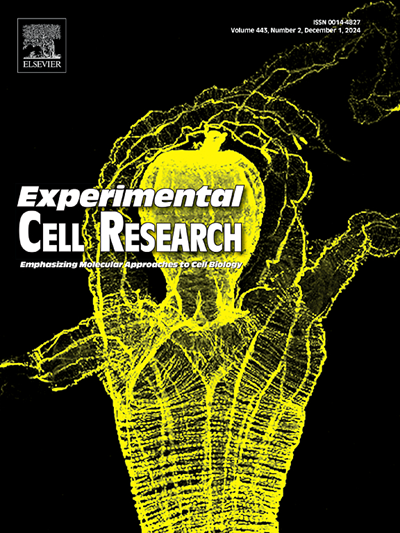NLRX1 and STING alleviate renal ischemia-reperfusion injury by regulating LC3 lipidation during mitophagy
IF 3.3
3区 生物学
Q3 CELL BIOLOGY
引用次数: 0
Abstract
Mitophagy significantly influences renal ischemia/reperfusion (I/R) injury and recovery. NLRX1 is recognized for its regulatory role in governing mitochondrial damage, autophagy, and the expression of pro-inflammatory factors. Despite the acknowledged involvement of NLRX1 in these crucial cellular processes, its specific function in renal I/R injury remains unclear. We detected the expression of NLRX1, the cGAS-STING pathway, and autophagy-related proteins using Western Blot analysis. RT-qPCR was utilized to measure the expression of NLRX1 mRNA and cytokines, and changes in mitochondrial DNA (mtDNA) within the cytoplasm. Immunofluorescence was applied to observe alterations in DNA distribution within the cytoplasm. The EtBr drug, which depletes mtDNA, and the Mdivi-1 mitophagy inhibitor, were used to verify the promotion of mitophagy by NLRX1. The results demonstrated that NLRX1 was downregulated after hypoxic/reoxygenation (H/R) injury, and there was an increase in cytoplasmic DNA. NLRX1 overexpression not only reduced IL-1β and IL-6 levels, but also decreased mtDNA in the cytoplasm. Additionally, NLRX1 further increases mitochondrial LC3 lipidation after H/R injury, and this effect is inhibited by Mdivi-1 drugs. The activation of the cGAS-STING pathway after H/R injury is inhibited by EtBr drugs and NLRX1. Co-immunoprecipitation results showed that NLRX1 could bind to STING. Moreover, inhibiting STING reversed NLRX1-induced mitochondrial LC3 lipidation. Our study reveals that NLRX1 can bind to STING to promote mitophagy and inhibits inflammation caused by mtDNA/cGAS/STING signaling.
NLRX1和STING通过调节有丝分裂过程中的LC3脂化减轻肾缺血再灌注损伤
线粒体自噬对肾缺血再灌注(I/R)损伤和恢复有重要影响。NLRX1 因其在线粒体损伤、自噬和促炎因子表达方面的调控作用而得到公认。尽管 NLRX1 参与这些关键的细胞过程已得到公认,但其在肾脏 I/R 损伤中的具体功能仍不清楚。我们利用 Western 印迹分析检测了 NLRX1、cGAS-STING 通路和自噬相关蛋白的表达。RT-qPCR 被用来测量 NLRX1 mRNA 和细胞因子的表达,以及细胞质内线粒体 DNA(mtDNA)的变化。免疫荧光技术用于观察 DNA 在细胞质内分布的变化。研究人员还使用消耗线粒体DNA的EtBr药物和Mdivi-1有丝分裂抑制剂来验证NLRX1对有丝分裂的促进作用。结果表明,H/R损伤后NLRX1下调,细胞质DNA增加。NLRX1 的过表达不仅降低了 IL-1β 和 IL-6 的水平,还减少了细胞质中的 mtDNA。此外,H/R 损伤后,NLRX1 会进一步增加线粒体 LC3 脂化,而 Mdivi-1 药物会抑制这种效应。EtBr药物和NLRX1抑制了H/R损伤后cGAS-STING通路的激活。共免疫沉淀结果显示,NLRX1能与STING结合。此外,抑制 STING 可逆转 NLRX1 诱导的线粒体 LC3 脂化。我们的研究揭示了 NLRX1 可与 STING 结合以促进有丝分裂,并抑制由 mtDNA/cGAS/STING 信号传导引起的炎症。
本文章由计算机程序翻译,如有差异,请以英文原文为准。
求助全文
约1分钟内获得全文
求助全文
来源期刊

Experimental cell research
医学-细胞生物学
CiteScore
7.20
自引率
0.00%
发文量
295
审稿时长
30 days
期刊介绍:
Our scope includes but is not limited to areas such as: Chromosome biology; Chromatin and epigenetics; DNA repair; Gene regulation; Nuclear import-export; RNA processing; Non-coding RNAs; Organelle biology; The cytoskeleton; Intracellular trafficking; Cell-cell and cell-matrix interactions; Cell motility and migration; Cell proliferation; Cellular differentiation; Signal transduction; Programmed cell death.
 求助内容:
求助内容: 应助结果提醒方式:
应助结果提醒方式:


